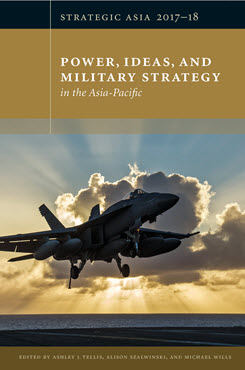Ideas, Perceptions, and Power
An Examination of China's Military Strategy
This chapter explains how a broad base of national power, the prevalence of perceived maritime threats, and national narratives about the “century of humiliation” and Chinese exceptionalism combine to make regional power projection the most attractive national military strategy to Chinese leaders.
EXECUTIVE SUMMARY
This chapter explains how a broad base of national power, the prevalence of perceived maritime threats, and national narratives about the “century of humiliation” and Chinese exceptionalism combine to make regional power projection the most attractive national military strategy to Chinese leaders.
MAIN ARGUMENT
China faces a wide range of internal and external challenges, ranging from maintaining domestic stability and sustainable economic growth to asserting its position in the international system and protecting its sovereignty and territorial integrity. China has five potential national military strategies to choose from to mitigate these challenges: internal security, external defense/continental power, regional power projection, regional hegemony, and development of a globally relevant military. Official statements, as well as the nature of training, investment, and structural reform of the People’s Liberation Army (PLA), suggest that the current strategy is one of regional power projection. China’s national power has not reached the point at which regional hegemony or a global strategy is a realistic option, nor is the country likely to downgrade its ambitions to an internal stability or external defense strategy.
POLICY IMPLICATIONS
- China’s military strategy is likely to remain one of regional power projection, though the contours of the region are expanding beyond East Asia and the South and East China Seas to Central Asia and South Asia.
- Given that China’s march toward regional power projection is unlikely to decelerate, the U.S. must ensure that its presence and posture in Asia, including in South Asia and Central Asia, keep apace.
- Because significant changes in threat perceptions and ideas will precede a move toward regional hegemony or a global strategy, continued attention to the content of authoritative Chinese sources as well as the exercises, activities, training, and procurement of the PLA should be the priority of the U.S. defense community.
Strategic Asia
The Strategic Asia annual edited volume incorporates assessments of economic, political, and military trends and focuses on the strategies that drive policy in the region. Learn more about Strategic Asia.


